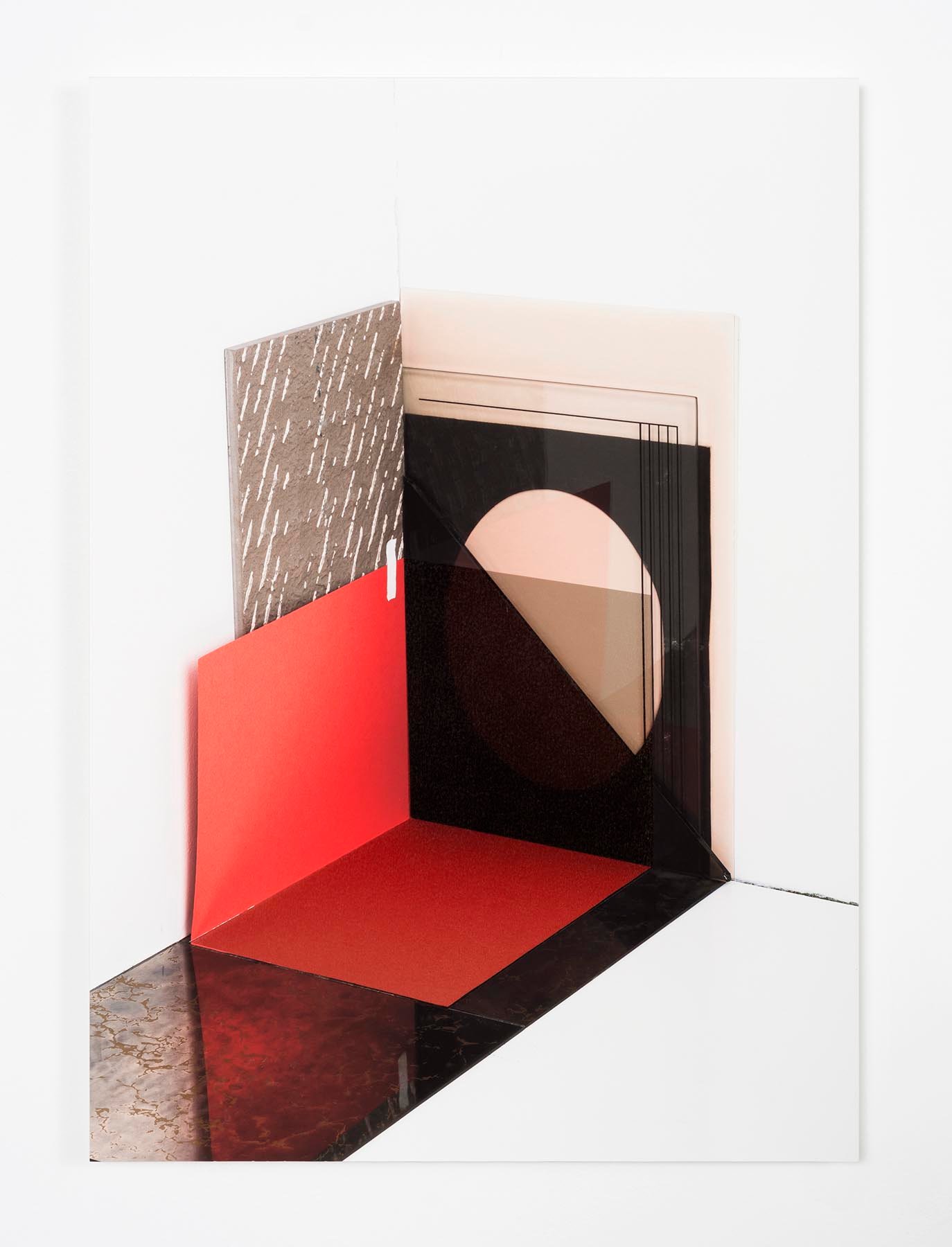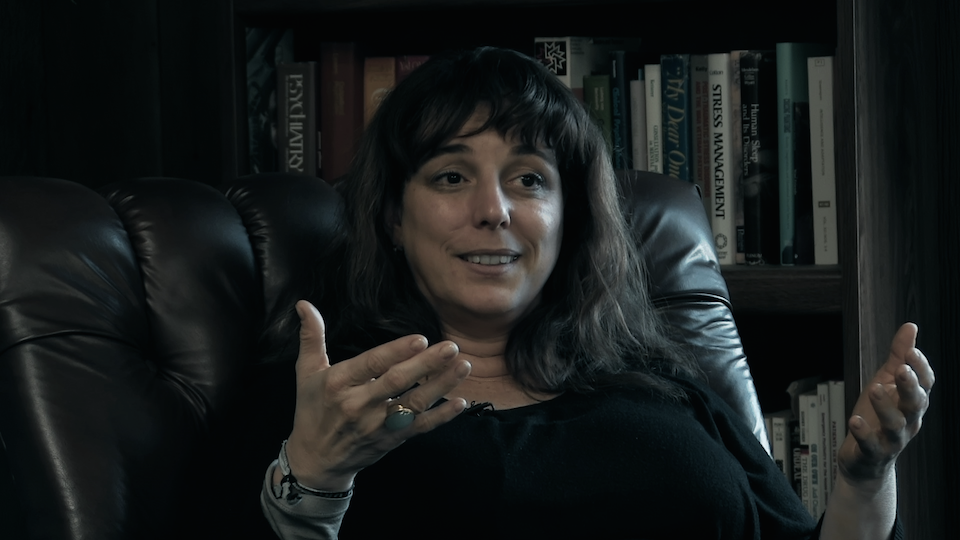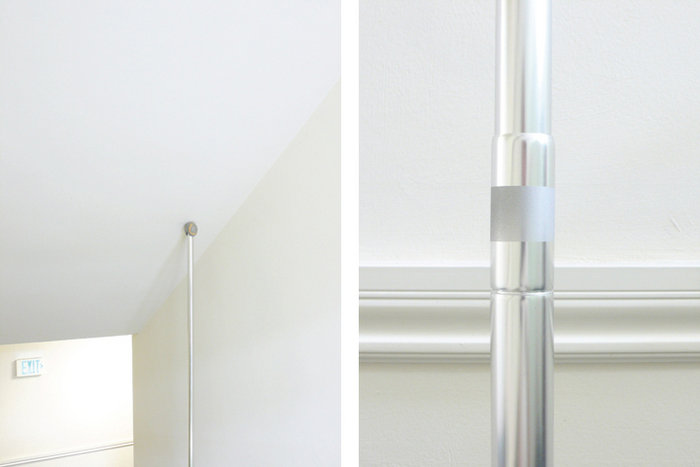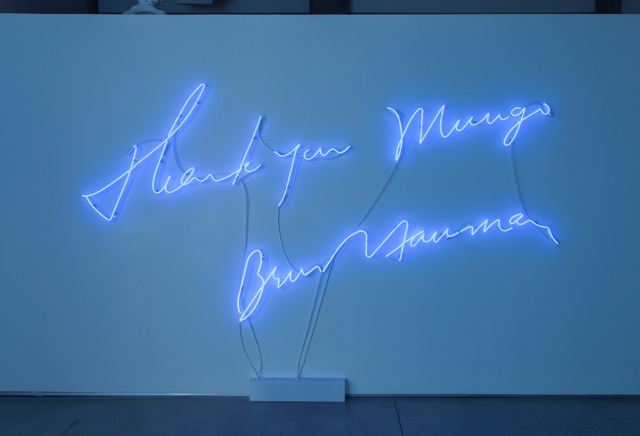Paint, Unpaint
2014 - Film & Video (Film & Video)
1:34 minutes
Kota Ezawa
Paint and Unpaint is an animation by Kota Ezawa based on a scene from a popular 1951 film by Hans Namuth featuring Jackson Pollock. At first glance, due to the oversimplified silhouettes Ezawa employs, the connection between his animation and Namuth’s film may not be obvious. However, when seen side by side, Ezawa’s piece is a faithful reproduction of the scene—up until a point in which his sequence begins playing in reverse, effectively unpainting every brushstroke. The scene in Namuth’s film is remembered by many for its experimental nature: with the camera pointed towards the sky, Pollock paints onto a sheet of glass as Namuth films the process from the opposite side. Through this unique viewpoint, what results is a filmic device that effectively conveyed Pollock’s process of “action painting” to wide audiences. As Ezawa gives this iconic scene a new life as a digital animation, he adds an additional layer of separation from the original source of focus, which is Pollock’s paint. Ezawa’s choice to reference Namuth relates to his ongoing investigation of the symbolic power of images in the mainstream. Allegedly, Namuth was more interested in the image of Pollock than his actual work, and as the author of several photographs and the 1951 film, his own role as image-maker was essential in conveying Pollock’s process to audiences and contributing to his fame. As much as the original film is about Pollock, Ezawa’s retake is constructed around Namuth’s representation of the iconic artist, and the degree to which it was responsible for constructing his identity in our social imaginary.
Kota Ezawa borrows images from the news, art history, and pop culture and turns them into cartoon-like stories. He produces flat and two-dimensional imagery via his light-boxes, works on paper, and animations. These works are often inspired by important moments in history, such as the assassinations of John F. Kennedy and Abraham Lincoln, the O.J. Simpson trial, and media coverage of former National Football League (NFL) player Colin Kaepernick kneeling during the national anthem as a symbol of protest. Ezawa’s animations, which he describes as “moving paintings,” make use of a labor-intensive technique that requires the artist to recreate each frame with close attention, producing hundreds of illustrations via digital drawing and animation software. He is best known for a signature style that embraces vibrant colors and simple forms, stripping detail from images to leave only essential attributes and environments. This reductive technique does not diminish the power of the image, as it turns to the familiar historical or cultural context to fill any gaps left by the artist’s erasures. However, the gesture also invites viewers to think about how these erasures might destabilize the reliability of public memories, highlighting the faulty process of collective remembering and what it tends to overlook.
Colors:
Related works from the » 2010's created around » San Francisco, California

© » KADIST
Will Rogan
2010MUM , the acronym used to title a series of Rogan’s small interventions on found magazines, stands for “Magic Unity Might,” the name of a vintage trade magic publication...

© » KADIST
Phillip Maisel
2015While his works can function as abstract, they are very much rooted in physicality and the possibilities that are inherent in the materials themselves...

© » KADIST
Lynn Hershman Leeson
2016Tania Libre is a film by Lynn Hershman Leeson centered around renowned artist Tania Bruguera and her experience as a political artist and activist under the repressive government of her native Cuba...

© » KADIST
Brian Bress
2013Blindseye Arranger (Max) (2013) features a greyscale arrangement of rudimentary shapes layered atop one another like a dense cluster of wood block prints, the juxtaposition of sharp lines and acute angles creating an abstracted field of rectangular and triangulated forms composed as if in a cubist landscape...

© » KADIST
Mark Bradford
2012This untitled work from 2012 is a print originally made as part of the Wattis Institute for Contemporary Art’s artist limited edition series...

© » KADIST
Matt Lipps
2011In the series Horizons (2010), Lipps uses appropriation to riff on Modernism’s fascination with abstract form...

© » KADIST
Chadwick Rantanen
2010Telescopic Pole is an adjustable telescopic pole that extends vertically from floor to ceiling and is held up by its own internal pressure...

© » KADIST
Jedediah Caesar
2010After being cast, the resulting resin block used in JCA-25-SC was cut into thin slices obtaining a series of rectangular shapes that resemble ceramic tiles...

© » KADIST
Miljohn Ruperto
2013Miljohn Ruperto’s high-definition video Janus takes its name from the two-faced Roman god of duality and transitions, of beginnings and endings, gates and doorways...

© » KADIST
Walead Beshty
2012Constructed out of metal or glass to mirror the size of FedEx shipping boxes, and to fit securely inside, Walead Beshty’s FedEx works are then shipped, accruing cracks, chips, scrapes, and bruises along the way to their destination...

© » KADIST
Juan Capistran
2012The 10 $1 bills that make up From a Whisper to a Scream (2012) read like instructions in origami...

© » KADIST
Ranu Mukherjee
2011Conceived as a large-scale mural-like projection, Color of History, Sweating Rocks is a neo-futuristic, hybrid film that combines cinematic language, collage, animation, and inventive forms to highlight the plight of the peoples of the Sahara—and refugees in general—who have been displaced by oil-mining....

© » KADIST
Martine Syms
2016Her 2016 video installation quotes the sitcom-as-form and also draws from a 1907 comedic short, Laughing Gas...

© » KADIST
Clarissa Tossin
2012In Fordlândia Fieldwork (2012), Tossin documents the remains of Henry Ford’s rubber enterprise Fordlândia, built in 1928 in the Brazilian Amazon to export cultivated rubber for the booming automobile industry...

© » KADIST
Will Rogan
2014Will Rogan’s video Eraser (2014) shows a hearse parked in a clearing amidst leaf barren trees...

© » KADIST
Alicia McCarthy
2010A painting reminiscent of a certain “naive primitivism,” Untitled (Colors) and Untitled (Ghost) are representative of McCarthy’s work...

© » KADIST
Petra Cortright
2011In her 2011 webcam video, Sickhands , Cortright poses before her in-computer camera, as her hands, hair, and body begin waving and rippling vertically across the screen, distorted by software effects...

© » KADIST
Clarissa Tossin
2017Clarissa Tossin’s film Ch’u Mayaa responds to Frank Lloyd Wright’s Hollyhock House (constructed 1919–21) in Los Angeles, an example of Mayan Revival architecture...


